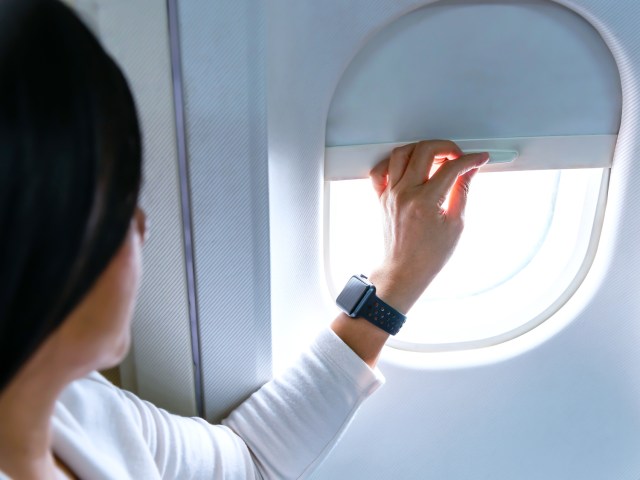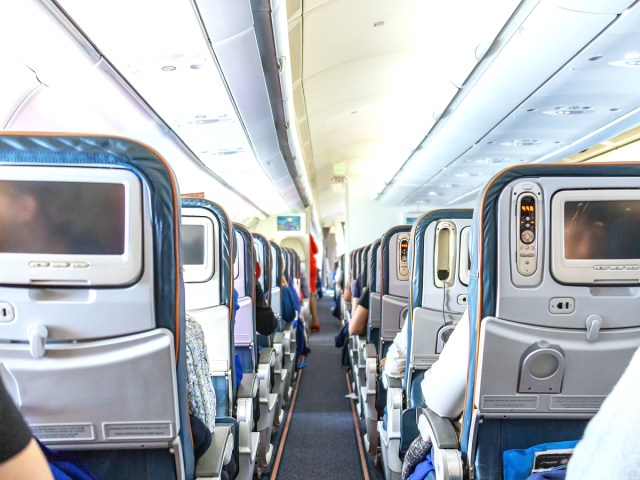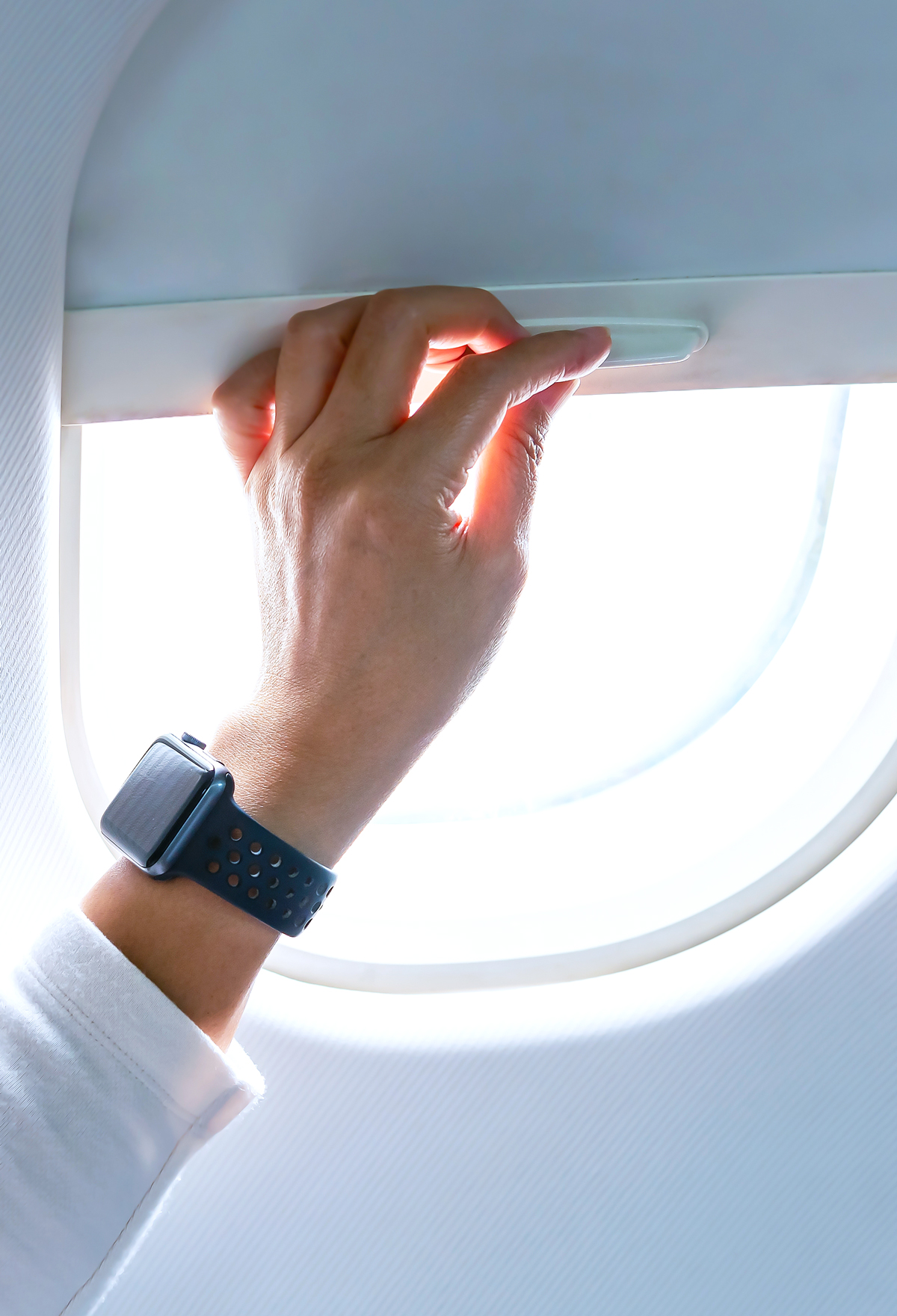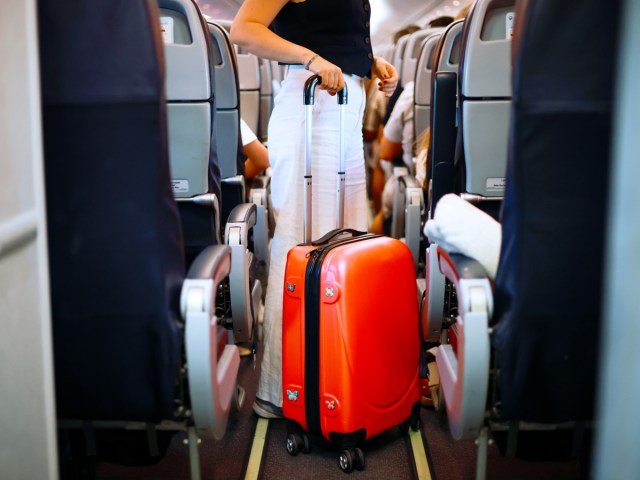Airplane etiquette is the subject of much debate, but most travel experts agree: When you sit in the window seat on an airplane, you get to decide whether to keep the shade up or down (as long as the flight crew doesn’t instruct you otherwise). That said, while control of the window shade falls on the window seat passenger, there are still a few important considerations. Sometimes, it’s recommended to put the shade up for practical reasons, while other times it’s suggested you lower the shade to be polite. Either way, if you find yourself in the window seat, it’s not always easy to know which choice is best. Before you settle in for your next plane trip, check out these tips for when you should keep the window shade up or down.
When To Keep the Shades Open

Personal preference aside, many airlines recommend (and some, particularly outside the U.S., require) keeping the shades open during takeoff and landing. This is especially the case at windows near the emergency exits. Takeoff and landing are critical moments during any plane journey, and the crew needs to be ready to jump into action in case of emergency. Keeping the shades open allows them to look outside for fire, smoke, or any other potential hazards that may impede a safe evacuation. Additionally, keeping certain window shades open during takeoff and landing allows rescue crews on the ground to see inside the plane in case the cabin is filled with smoke, for example.
But there’s another benefit for passengers: According to the CDC, keeping the window shades open may also help reduce motion sickness, which is often caused by a mismatch between what your body feels and what your eyes see. If the shade is down, you may not actually “see” that you’re moving, which could cause you to feel queasy. If this is an issue that plagues you, try keeping the shade open during bumpier parts of the trip or during takeoff and landing.
Of course, part of the reason you purchased a window seat may be the view. As long as the flight crew isn’t instructing otherwise, the window seat passenger should feel free to keep the shades open to enjoy the passing scenery. After all, looking down at the beautiful terrain below can be one of the most enjoyable aspects of flying.
When To Keep the Shades Closed

At times, the crew may make an announcement requesting that passengers lower their window shades, particularly during overnight or long-haul flights when people are trying to sleep in order to beat jet lag — even if it’s still light outside the airplane. In this event, it’s best to abide by the request rather than argue. Flight attendants are doing their best to ensure the comfort of every passenger, so if people are trying to sleep, lowering the shades ensures that they’re not disturbed by sunlight when the sun eventually rises.
Whether or not you hear an announcement, it’s also useful to take cues from fellow passengers. If your shade is the only shade that’s open in the entire cabin, then the sunlight may prove to be an unwanted nuisance for your fellow passengers. So, it may be a good idea to lower the shade and then reopen it when others begin to open theirs.
Be Considerate of Others

When it comes to window shade etiquette, it’s a balancing act between your own personal preferences and the preferences of other passengers. You may want to gaze out on the world while the person next to you is trying to watch a movie but can’t because of the glare. As a rule of thumb, there’s no need to go out of your way and close the window shade before someone says something.
However, if anyone politely asks if you’d consider opening or closing the window shade, try to compromise and find a solution that works best for you both. Perhaps you can agree to leave the shade half open, or to keep it closed for the next 30 minutes so they can finish their movie. At the end of the day, it’ll be a better flight for everyone if you choose to work with your fellow passengers rather than argue.
More from our network
Daily Passport is part of Inbox Studio, which publishes content that uplifts, informs, and inspires.























